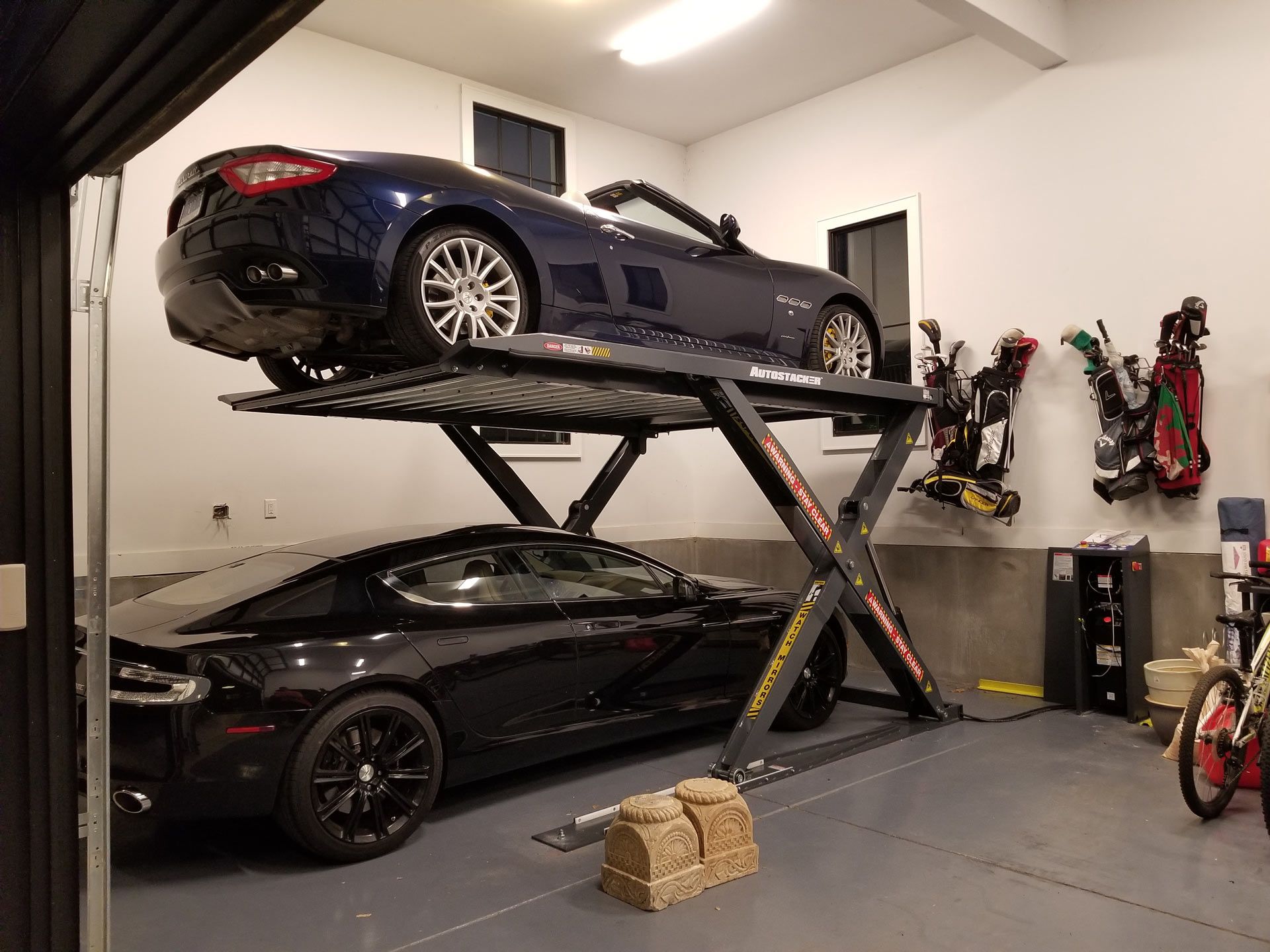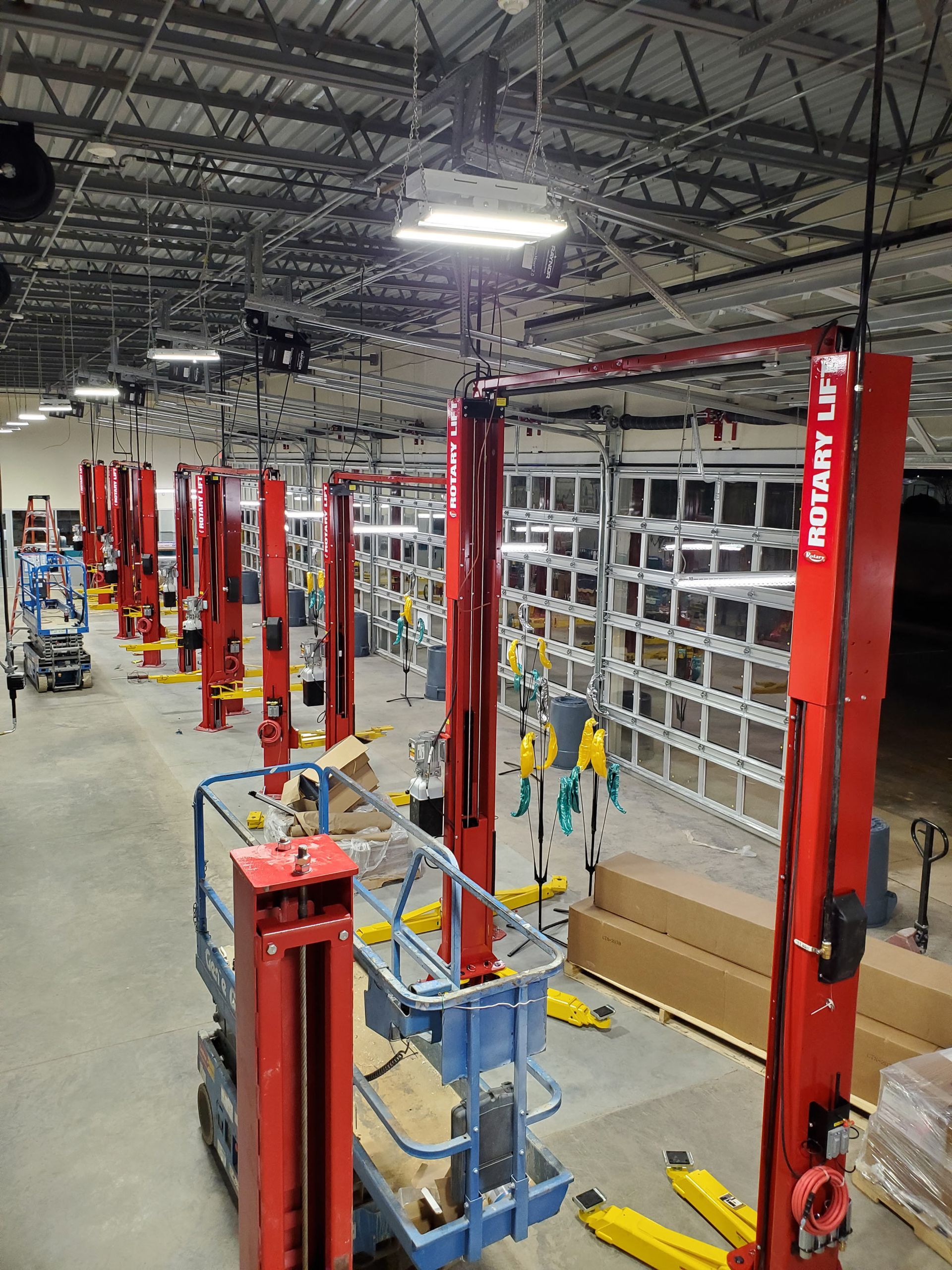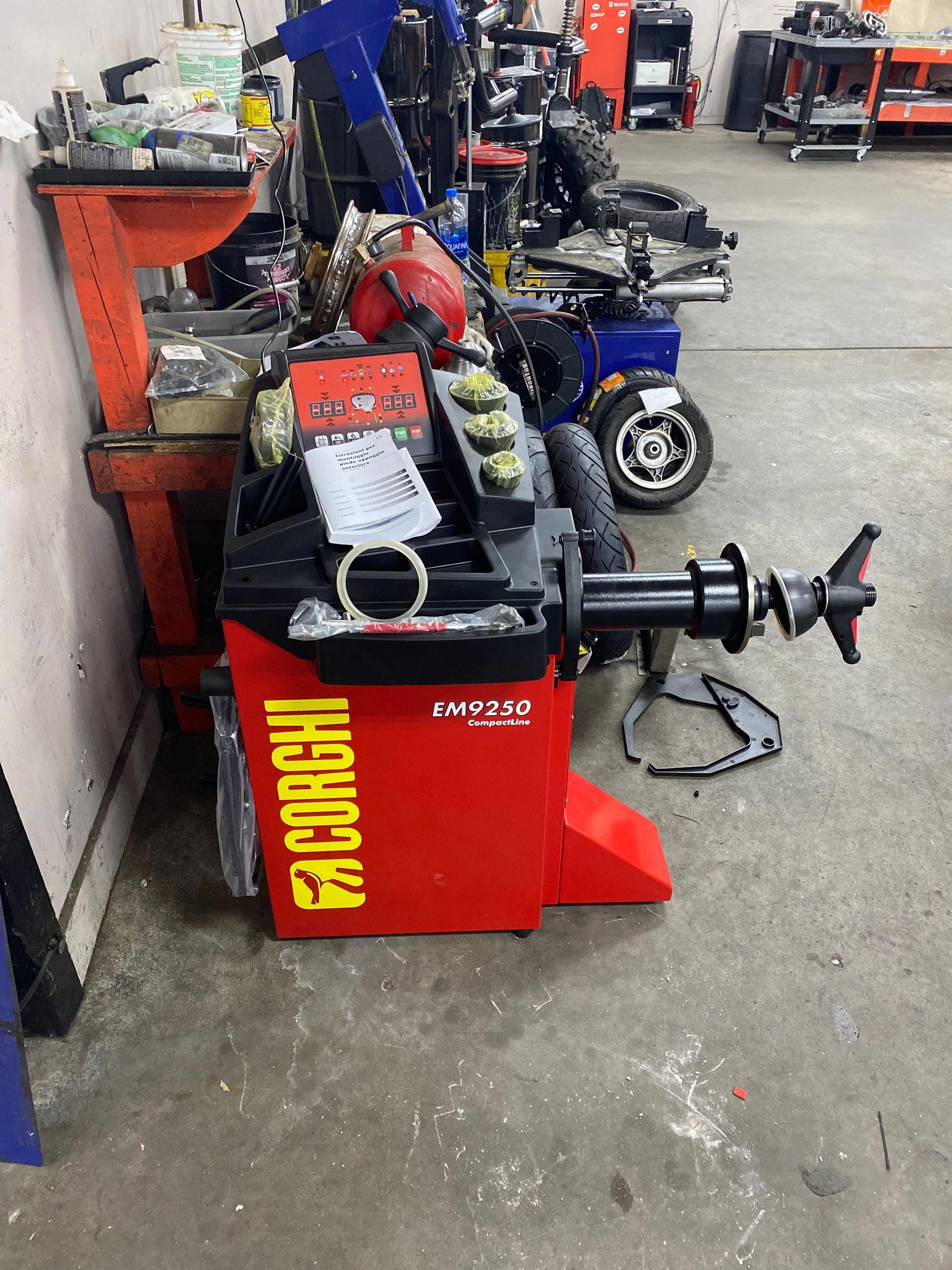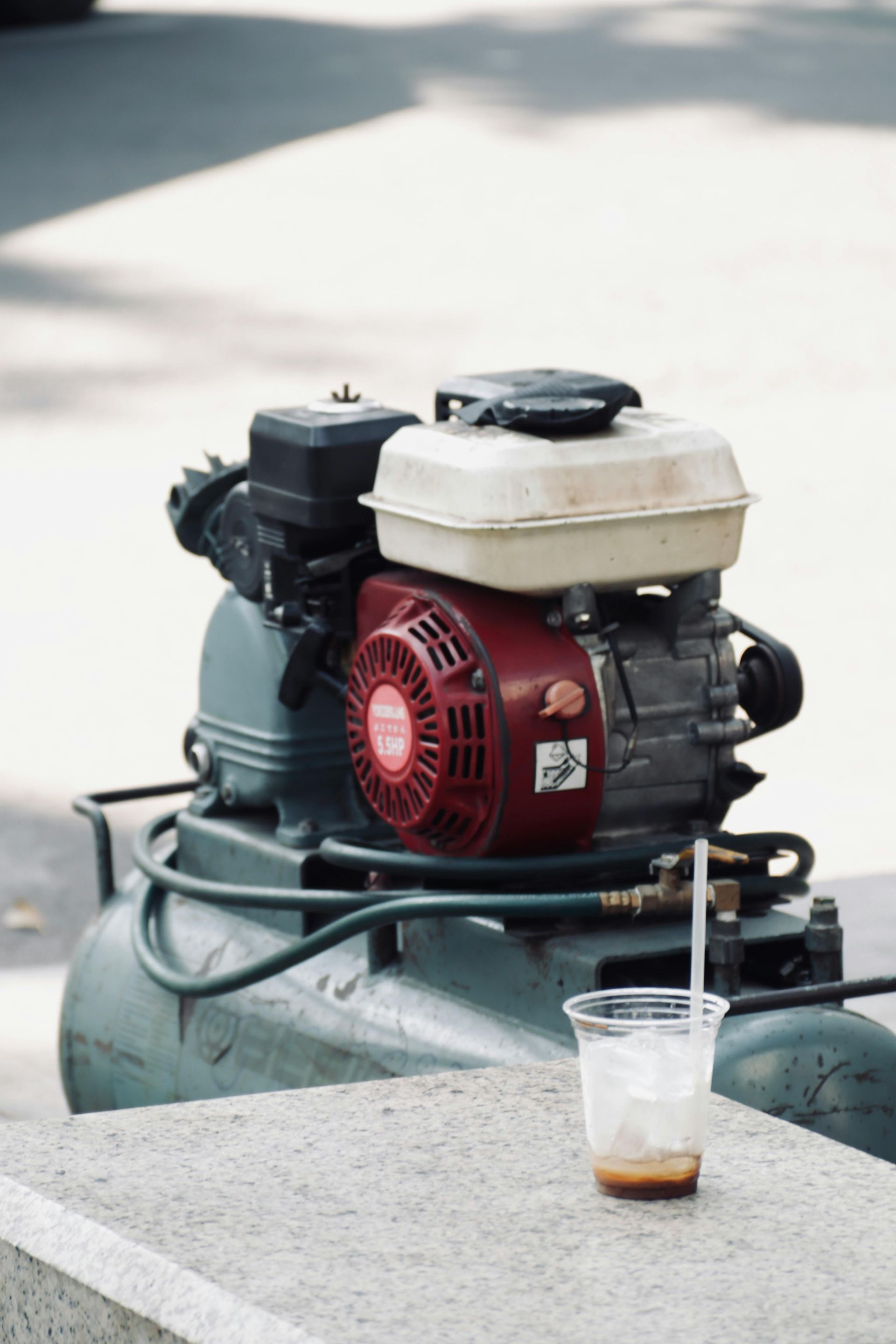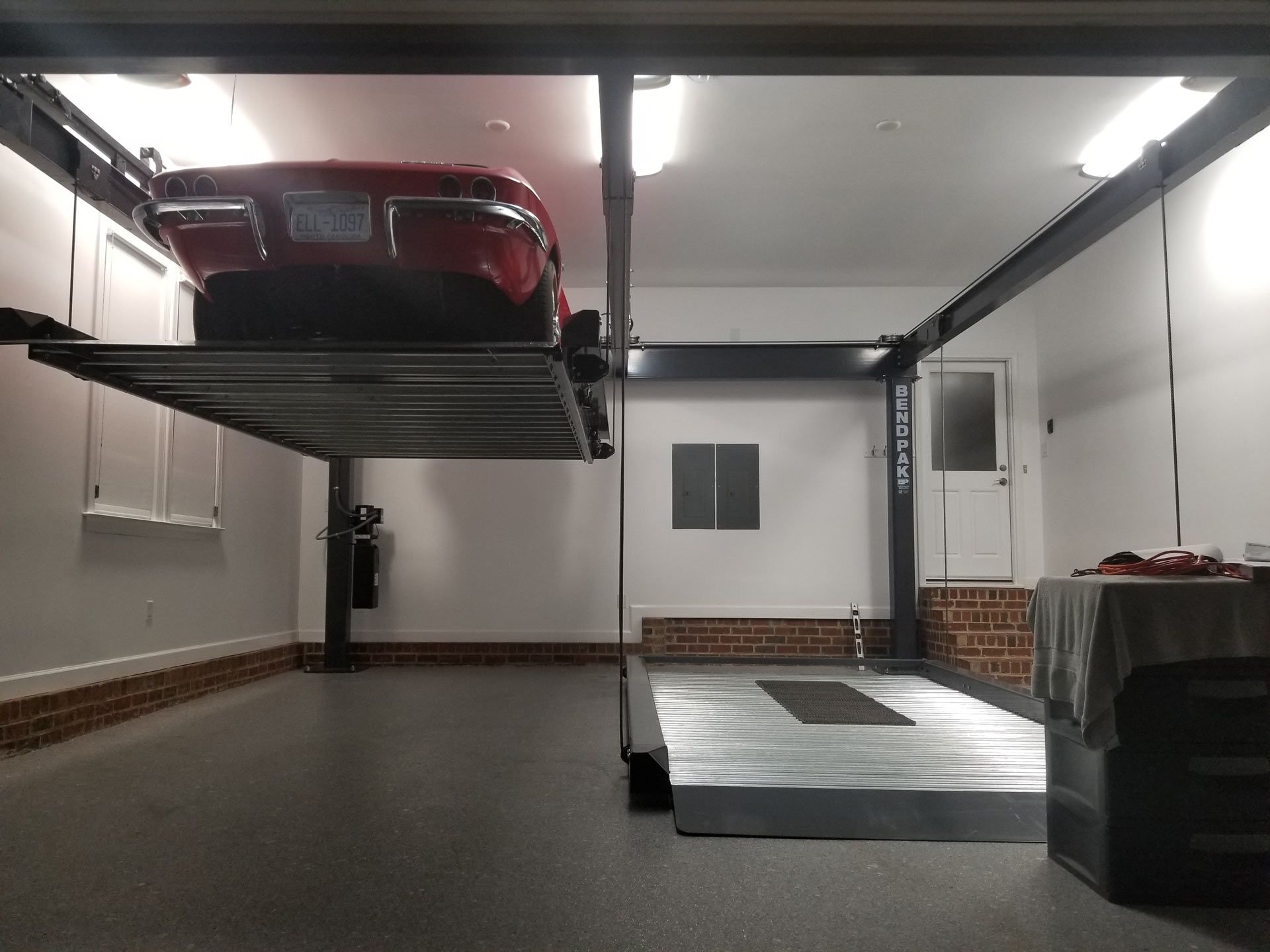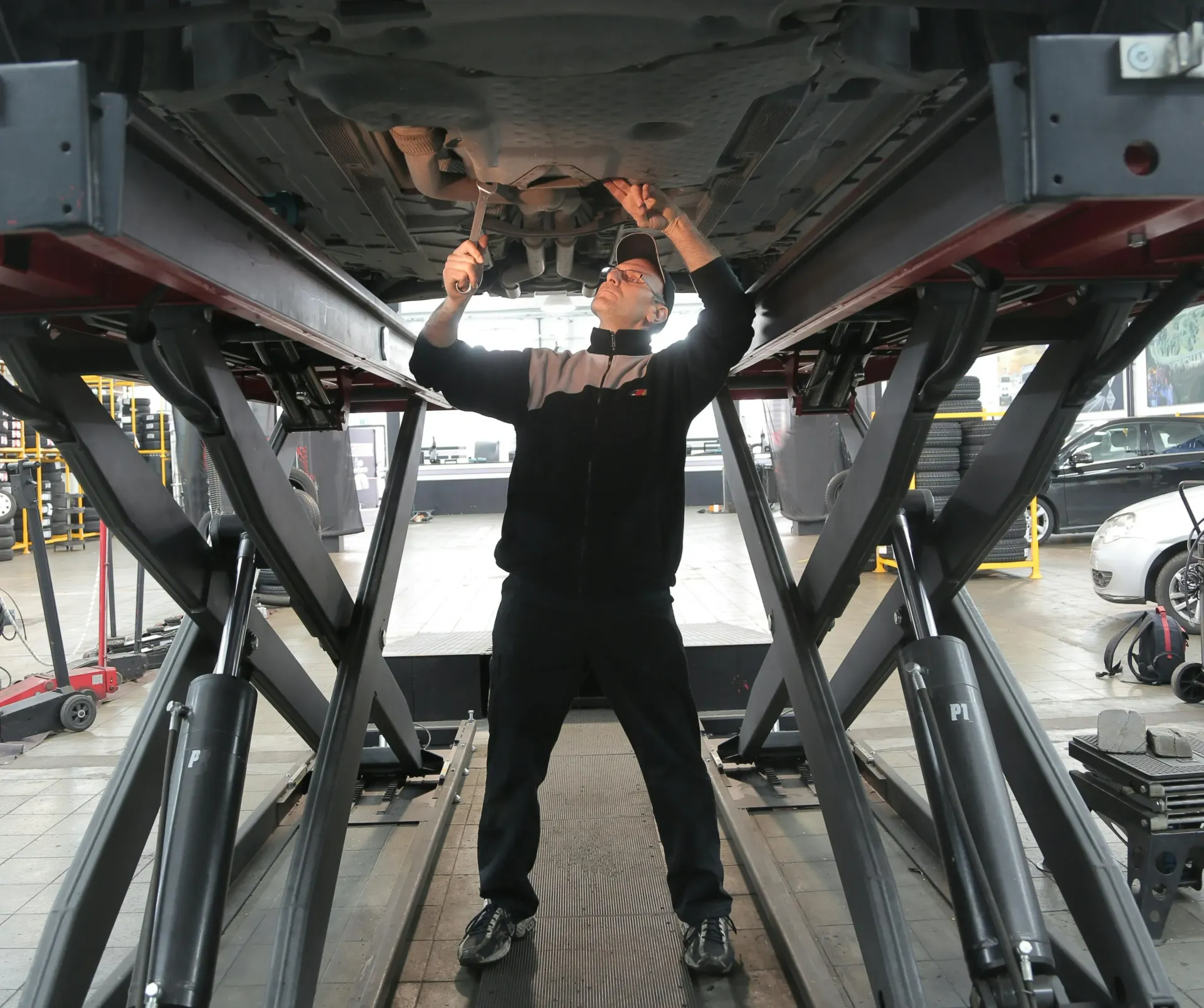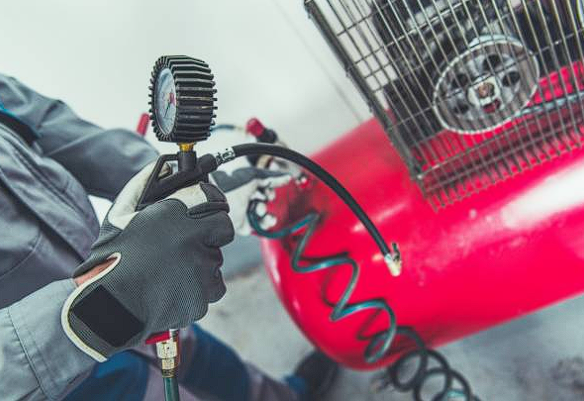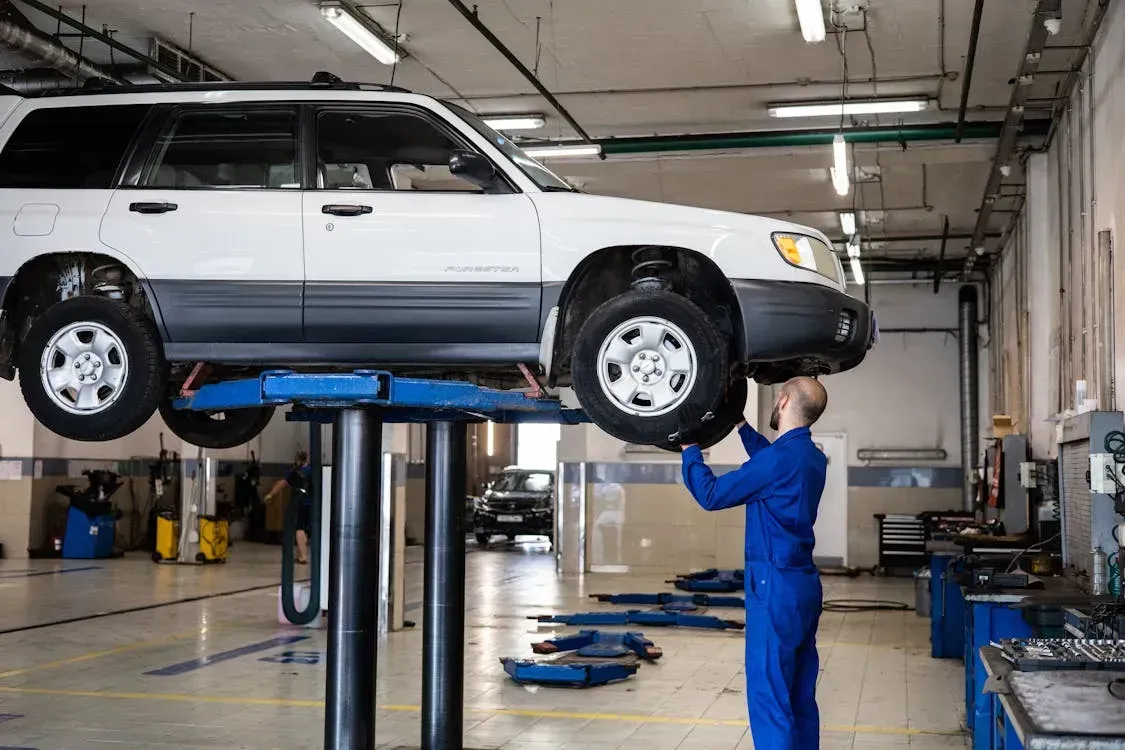
Comprehensive Guide to Proper Car Lift Maintenance for Longevity and Safety
If you run a shop, your car lift is one of the most important tools you've got. It’s what helps you raise cars for repairs, inspections, or upgrades. But just like any tool, your car lift needs regular maintenance to stay safe and keep working right.
Maintaining your lift isn’t just about keeping things running smoothly—it’s also about safety. A poorly maintained lift can lead to accidents, costly repairs, and wasted time. If you don’t take care of it, you’re not just risking damage to cars—you’re putting your team in danger too.
In this guide, we’ll break down everything you need to know about proper car lift maintenance, why it matters, and what steps you can take to keep your lift in top shape.
Why Regular Car Lift Maintenance Is Essential
Car lifts are built to handle heavy loads, but like any machine, they need regular upkeep to stay reliable. Skipping maintenance can lead to some serious issues down the road—not just for your lift but for the cars and people around it.
First off, safety is a big reason to stay on top of maintenance. A lift that’s not working right could malfunction, putting both workers and vehicles at risk. Imagine a car dropping or the lift failing to lock properly. That’s an accident waiting to happen.
Beyond safety, there’s the cost factor. Ignoring small issues can lead to bigger, more expensive repairs down the line. Hydraulic leaks, worn cables, or loose bolts are easy to fix if you catch them early. But let those problems pile up, and you might be looking at a full system breakdown—or worse, having to buy a new lift altogether.
Regular maintenance also keeps your lift running efficiently. When everything’s lubricated, aligned, and working as it should, your team can get jobs done faster without worrying about the lift stalling or malfunctioning. This means less downtime and more productivity.
Lastly, there’s the warranty. Most manufacturers require regular maintenance to keep the warranty valid. If something goes wrong and you haven’t kept up with the scheduled maintenance, you could be left footing the entire repair bill.
Bottom line: regular maintenance isn’t just a nice-to-have—it’s a must if you want to protect your investment and keep everyone safe.
Car Lift Maintenance Checklist
Sticking to a regular maintenance routine is key to keeping your car lift in top shape. Below is a checklist of tasks you should follow to ensure everything runs smoothly and safely.
Daily Checks
- Visual Inspection: Start by giving the lift a quick once-over. Look for any obvious signs of wear and tear—things like frayed cables, hydraulic leaks, or rust. Catching these early can prevent bigger issues.
- Lift Arms: Make sure the lift arms are moving freely and aren’t bent. Also, check that the safety locks are engaging properly.
- Safety Locks: Test the locks to ensure they’re working as they should. These locks are your last line of defense if something goes wrong with the hydraulic system.
- Clean the Lift: Remove dirt, oil, or debris that can interfere with the lift’s operation. Keeping the area clean helps prevent accidents.
Monthly Checks
- Hydraulic Fluid Levels: Low hydraulic fluid can cause the lift to malfunction. Make sure the fluid levels are within the manufacturer’s recommended range.
- Bolts and Nuts: Check all fasteners for tightness. Vibration and constant use can loosen bolts over time, which can compromise the lift’s stability.
- Cables and Pulleys: Inspect for any signs of wear or fraying. Replace any damaged cables immediately, as they’re essential to the lift’s safe operation.
- Lubrication: Apply lubricant to all moving parts to reduce friction and wear. This keeps the lift running smoothly and extends its lifespan.
Annual Checks
- Full Inspection: Get a professional to do a thorough inspection once a year. They’ll check all the mechanical and electrical components and make sure everything’s up to standard.
- Alignment and Balance: Make sure the lift is properly aligned and balanced. If it’s not, you risk uneven lifts, which can be dangerous.
- Load Testing: Some shops test their lifts under maximum load to make sure everything is functioning as it should under stress.
Following this checklist can help you catch issues early and keep your lift running efficiently. The more proactive you are with maintenance, the fewer headaches you’ll have down the road.
Common Car Lift Problems and How to Address Them
Even with regular maintenance, car lifts can still run into issues. Knowing what to look for and how to fix it can save you time and money. Here are some of the most common problems you might encounter and what to do about them.
Hydraulic Leaks
One of the most frequent issues with car lifts is hydraulic fluid leaks. If you spot puddles or notice the lift struggling to raise cars, you might have a leak. This can happen due to worn seals or cracks in the hydraulic lines.
What to Do
- Inspect the hydraulic system for any visible leaks.
- Replace any damaged seals or hoses immediately.
- Top off the hydraulic fluid, but make sure you’re using the right type recommended by the manufacturer.
Worn Cables and Pulleys
Cables and pulleys are critical parts of the lift, and they’re under constant strain. Over time, they can wear out or fray, which can compromise the lift’s ability to hold a vehicle safely.
What to Do
- Regularly inspect the cables for signs of wear, such as fraying or stretching.
- Replace worn cables right away—this isn’t something you want to delay.
- Lubricate pulleys to keep them moving smoothly and prevent excessive wear.
Uneven Lifting
If one side of the lift seems to raise faster or higher than the other, this could indicate a balance issue. It might be due to uneven wear, poor alignment, or a problem with the lift’s hydraulics.
What to Do
- Check the lift’s alignment and ensure it’s installed on a level surface.
- Inspect the hydraulic system for air bubbles or leaks, which can affect how evenly the lift raises vehicles.
- If the problem persists, it’s best to call in a professional to assess the lift.
Electrical Malfunctions
Modern car lifts often rely on electrical components, such as limit switches and control boxes, to operate smoothly. If the lift stops responding to controls or experiences power failures, you may be dealing with an electrical issue.
What to Do
- Check for any loose wiring or connections in the control system.
- Test the limit switches to make sure they’re functioning properly.
- If the electrical issue isn’t obvious, consult a technician who specializes in car lifts.
Excessive Noise
Lifts shouldn’t be making loud or unusual noises during operation. Grinding, squeaking, or clunking sounds could mean there’s friction where there shouldn’t be or that parts are wearing out.
What to Do
- Apply lubricant to all moving parts.
- Inspect for any loose components or fasteners.
- If the noise continues, it might be time for a more detailed inspection or professional servicing.
Being aware of these common issues and handling them quickly can prevent bigger problems down the road. Regular inspections and timely repairs will keep your car lift safe and operational for years to come.
Manufacturer’s Guidelines for Car Lift Maintenance
When it comes to car lift maintenance, following the manufacturer's guidelines is crucial. Each lift model is designed differently, and what works for one type might not work for another. Sticking to the recommended procedures not only ensures safety but also helps you avoid voiding any warranties.
Follow the Manual
Every car lift comes with a manual that lays out maintenance schedules, recommended parts, and proper handling procedures. If you lose the manual, most manufacturers offer digital copies online. The manual will usually specify things like:
- How often to check hydraulic fluid levels.
- What type of lubricant to use on moving parts.
- When to replace key components like cables or pulleys.
Why it’s Important
Using the wrong type of fluid or grease can lead to quicker wear and tear.
Skipping or delaying maintenance outlined in the manual can void your warranty, leaving you responsible for expensive repairs.
Manufacturer-Specific Parts
Not all parts are created equal. Some cheaper alternatives might look similar to the manufacturer's recommended parts but could affect the performance of your lift or wear out faster.
Stick to Manufacturer-Recommended Parts
Using genuine parts ensures the lift continues to function as designed.
You also reduce the risk of malfunction that could lead to injury or damage.
Service Intervals
Manufacturers usually recommend servicing intervals based on the usage of the lift. For example:
- Heavy-Duty Usage: If your lift is used multiple times a day, daily inspections and monthly servicing are often required.
- Moderate Usage: For less frequent use, you might get away with weekly checks and bi-annual services.
Following these schedules is key to keeping your lift running efficiently. Not sticking to them can lead to wear that’s hard to detect until it's too late.
Special Considerations for Different Lift Types
- Two-Post Lifts: Require extra attention to arm restraints and height adjustments.
- Four-Post Lifts: Focus more on cable and pulley inspections, as these carry the weight.
- Scissor Lifts: Look for hydraulic issues and ensure smooth raising and lowering.
Each type has its quirks, so it’s essential to reference the manual specific to your lift model.
By sticking to the manufacturer’s guidelines, you ensure your car lift stays safe, effective, and long-lasting. Not only does this keep your equipment running smoothly, but it also helps protect your investment for the long haul.
How Often Should You Service Your Car Lift?
How often you should service your car lift depends on how frequently you use it and the type of lift you have. Routine checks can help you avoid bigger, more costly repairs and ensure the safety of your employees and vehicles.
Daily Checks
Even if you’re using your lift lightly, it’s a good idea to run some basic checks every day before use:
- Visual Inspection: Check for leaks, cracks, or any obvious wear and tear. A quick look can help you catch small issues before they turn into bigger problems.
- Safety Locks: Test the locks to make sure they engage properly. These are essential for preventing accidents if the hydraulic system fails.
Why Daily Checks Matter
These small inspections can prevent breakdowns during use. They’re quick and easy, and they add an extra layer of safety.
Weekly or Monthly Checks
For shops using car lifts frequently, more thorough checks should be done on a weekly or monthly basis:
- Hydraulic Fluid: Check and top off hydraulic fluid if necessary. Low fluid levels can lead to slower lift operation or even cause the lift to fail.
- Cables and Bolts: Inspect all cables for signs of fraying and check that bolts are tight. Loose bolts or worn cables can lead to uneven lifts or, in the worst-case scenario, total lift failure.
- Lubrication: Apply lubricant to all moving parts, especially those under heavy strain, like the arms and cables.
Why It’s Important
Consistently performing these checks keeps everything running smoothly. Ignoring them might lead to major malfunctions, and you’ll find yourself dealing with expensive downtime and repairs.
Annual Inspections
Once a year, you should schedule a full inspection of your car lift with a professional technician. They’ll do a deep dive into every component:
- Professional Inspection: A certified technician can spot issues you might miss during routine checks. They’ll examine the entire system, including electrical components, hydraulic systems, and load-bearing parts.
- Load Testing: Some shops perform load testing to ensure the lift can handle its maximum capacity without any issues. This is especially important for lifts used in high-traffic environments.
Why an Annual Service Is Key
A yearly inspection helps you catch hidden problems that aren’t visible during daily or weekly checks. A technician’s eye can make the difference between a well-running lift and a disaster waiting to happen.
After Heavy Use or Major Incidents
If you’ve been using your lift more than usual or if there’s been an incident (like an overloaded lift or a minor accident), it’s essential to do an immediate inspection:
- Post-Incident Inspection: Check all critical components to ensure they weren’t damaged during the incident. Look closely at hydraulic hoses, cables, and bolts, as these are usually the most affected by strain or impact.
Why This Matters
After heavy use or an accident, your lift could be damaged in ways that aren’t immediately obvious. An immediate check can prevent further damage or a potential safety hazard.
By sticking to a regular maintenance schedule, you’ll keep your car lift running smoothly, reduce the risk of accidents, and avoid unexpected repair costs. These intervals ensure you’re not only keeping your equipment in good shape but also protecting the people who work around it.
DIY vs. Professional Car Lift Maintenance
When it comes to maintaining your car lift, there are some tasks you can handle on your own, while others are better left to the professionals. Understanding the difference between what you can DIY and when you should call in an expert is key to keeping your lift in good working order without risking safety.
DIY Maintenance
There are plenty of routine tasks you can manage yourself without needing a technician. These DIY checks and fixes are perfect for daily or weekly maintenance:
- Lubrication: Keeping moving parts well-lubricated is something you can easily do. Make sure you’re using the manufacturer-recommended lubricant and apply it to areas like arms, hinges, and pulleys.
- Tightening Bolts: Bolts can loosen over time with regular use, but you don’t need a pro to tighten them up. Regularly check bolts and nuts and tighten anything that feels loose.
- Cleaning: A clean lift works better. Make sure to regularly clean off dirt, oil, and debris that could interfere with the lift’s mechanisms or create a slippery, unsafe environment.
- Visual Inspections: Checking for frayed cables, leaks, and signs of wear is something you can—and should—do regularly. Catching issues early can prevent bigger problems.
When DIY Works Best
DIY maintenance is ideal for quick, routine tasks that don’t require specialized tools or technical knowledge. These small efforts can extend the life of your lift and keep it running smoothly between professional services.
Professional Maintenance
While DIY maintenance covers basic upkeep, there are some tasks that require a professional touch. Attempting to handle these yourself could lead to costly mistakes or even make your lift unsafe to use.
- Hydraulic System Repairs: Hydraulic leaks or issues with the system require specialized knowledge. If you notice problems with the hydraulics, it’s best to call in a technician to assess the situation and repair it correctly.
- Electrical Inspections and Repairs: Lifts with electrical components, such as limit switches or control boxes, should be inspected by a professional. Faulty electrical work can lead to serious safety hazards.
- Cable and Pulley Replacements: Worn or frayed cables need to be replaced by a certified technician. This is not a DIY task—you don’t want to risk incorrect installation, which could lead to a major malfunction or accident.
- Annual Inspections: A certified technician should handle your yearly inspection. They’ll look for issues you might miss, check the alignment, and run diagnostic tests to make sure everything is in working order.
When to Call in a Pro
If you’re dealing with any issue involving hydraulics, electrical components, or complex mechanical repairs, leave it to the professionals. Their expertise ensures that your lift remains safe and functional without risking further damage.
Cost Comparison: DIY vs. Professional
- DIY Maintenance: Generally inexpensive. You’ll mainly need lubricants, cleaning supplies, and basic tools like wrenches and screwdrivers.
- Professional Maintenance: While more costly upfront, professional servicing is essential for preventing major breakdowns. A yearly inspection or hydraulic system repair can save you from much higher costs down the road.
By balancing DIY tasks with professional maintenance, you can keep your car lift running efficiently while ensuring safety. Handling simple tasks yourself is a great way to extend the life of your lift, but knowing when to call in a pro is just as important for long-term performance.
Safety Precautions During Car Lift Maintenance
Maintaining your car lift isn’t just about keeping it running smoothly—it’s also about ensuring safety for everyone in the shop. Car lifts can be dangerous if not handled properly, so following some basic safety precautions during maintenance is crucial.
Always Follow Manufacturer Instructions
Every car lift is different, and each manufacturer provides specific safety guidelines for maintenance. These instructions are tailored to the design of the lift, so always refer to the manual before performing any maintenance tasks. Ignoring these instructions could lead to improper maintenance, which can cause accidents or damage.
Why It’s Important
Manufacturer instructions are there for a reason. Skipping steps or using the wrong tools can compromise the lift’s safety features, leaving you vulnerable to accidents.
Use Proper Safety Equipment
When performing maintenance, always wear the right protective gear. This includes:
- Gloves: To protect your hands from sharp edges, hot components, or chemicals like hydraulic fluid.
- Safety Glasses: To prevent debris or fluids from getting into your eyes during inspections or repairs.
- Steel-Toe Boots: In case any heavy parts are dropped, these will protect your feet from injury.
Why It’s Important
Car lift components are heavy and sometimes require the use of chemicals or tools that can cause injury. Proper safety gear ensures you’re protected while working.
Secure the Lift Before Maintenance
Before performing any maintenance, make sure the lift is in a secure position. This means:
- Engaging the Safety Locks: These are crucial for holding the lift in place while you inspect or service it. Never work under a lift that isn’t locked.
- Ensuring the Vehicle is Properly Positioned: If a car is on the lift, make sure it’s properly balanced and secured. An unevenly positioned vehicle can shift during maintenance, creating a serious hazard.
Why It’s Important
A lift without safety locks engaged can drop unexpectedly, leading to severe injury or damage. Taking a few minutes to ensure everything is locked and balanced is well worth the effort.
Disconnect Power Before Electrical Work
If you’re performing any electrical maintenance or inspections, make sure to disconnect the power to the lift first. This will prevent any accidental shocks or unexpected lift movements while you’re working.
Why It’s Important
Working on electrical components while the lift is powered can be extremely dangerous. Always disconnect the power to avoid any risks.
Keep the Area Clean and Clear
A cluttered workspace can lead to accidents. Make sure the area around the lift is clean and free of tools, debris, or fluids that could cause slips or trips.
Why It’s Important
A clean work environment reduces the chance of accidents and allows you to move freely around the lift without tripping over obstacles or slipping on oil spills.
Have an Emergency Plan
In case something goes wrong during maintenance, make sure you have a plan in place. This could include:
- Knowing how to disengage the lift’s emergency stop.
- Having a first aid kit nearby.
- Ensuring everyone in the shop knows the emergency procedures.
Why It’s Important
Preparation can make a huge difference in an emergency. Having a plan in place ensures you can act quickly if something goes wrong.
By following these safety precautions, you’ll minimize risks during car lift maintenance and keep your team safe. Taking the extra steps to secure the lift, wear proper safety gear, and maintain a clean work area is crucial to preventing accidents.
Signs That It’s Time for a Car Lift Replacement
No matter how well you maintain your car lift, it won’t last forever. Over time, parts wear out, and performance can degrade to the point where repairs aren’t enough. Knowing when it’s time to replace your car lift is just as important as maintaining it. Here are some signs that it might be time for an upgrade.
Frequent Hydraulic Leaks
Hydraulic leaks are one of the most common issues with car lifts, but if you’re constantly fixing leaks or refilling hydraulic fluid, it could be a sign that the system is worn out. Replacing seals or hoses might be a temporary fix, but when leaks become frequent, the entire hydraulic system may need an overhaul.
What to Watch For
- Consistent drops in hydraulic fluid levels.
- Puddles of fluid forming under the lift regularly.
- Sluggish lift operation or difficulty raising cars.
When to Replace
If hydraulic leaks are occurring more often despite repairs, it may be time to consider replacing the lift or at least the hydraulic system.
Worn or Damaged Cables
The cables that support and raise the lift are under constant tension. Over time, these cables can fray or stretch, reducing their strength. While you can replace cables individually, significant wear across multiple cables could mean the lift is nearing the end of its safe operation.
What to Watch For
- Frayed or rusted cables.
- Uneven lifting or sagging on one side.
- Visible signs of cable wear during inspections.
When to Replace
If multiple cables show signs of wear or the lift struggles to maintain balance, replacement may be safer than continued repairs.
Structural Damage
If the lift’s frame or arms are bent, cracked, or rusted, it’s a serious safety issue. Structural damage can compromise the lift’s ability to support vehicles, leading to catastrophic failure. While minor damage can sometimes be repaired, extensive structural issues are a clear sign that the lift is no longer safe.
What to Watch For
- Cracks or bends in the lift arms or base.
- Excessive rust, especially around joints and load-bearing areas.
- Movement or wobbling during operation.
When to Replace
Structural damage is often beyond repair. If your lift shows signs of weakening or damage, it’s time to replace it before a serious accident occurs.
Frequent Repairs and High Costs
If you find yourself constantly repairing the lift and spending more on maintenance than you’d like, it might be more cost-effective to replace the lift. A lift that’s always in the shop not only costs money for repairs but also leads to downtime in your business.
What to Watch For
Repeated breakdowns and frequent repairs.
High costs for replacement parts and labor.
Extended downtime due to repairs.
When to Replace
If the cost of repairs is starting to rival the cost of a new lift, it’s time to consider replacing the unit. Investing in a new lift could save you money in the long run.
Outdated Technology or Safety Features
As car lifts evolve, newer models come with advanced safety features and improved technology. If your lift is an older model, it might be lacking features that are now standard, such as automatic safety locks, better hydraulic systems, or improved load-bearing capabilities.
What to Watch For
- Lack of modern safety features (automatic locks, emergency stops, etc.).
- Slower operation or reduced lifting capacity compared to newer models.
- Inability to handle newer, heavier vehicles.
When to Replace
If your lift is outdated and can’t handle the demands of modern vehicles or safety standards, it’s time to upgrade to a newer model with better features.
Replacing a car lift is a big decision, but recognizing the signs early can help you avoid bigger problems down the road. A well-timed replacement ensures your shop stays safe, productive, and ready for whatever comes next.
Conclusion
Proper car lift maintenance is essential to ensure the safety of your team and the longevity of your equipment. By following a regular maintenance schedule, addressing small issues before they become major problems, and understanding when it’s time to replace your lift, you can keep your shop running smoothly and safely. Staying on top of inspections and repairs means fewer breakdowns, less downtime, and better overall performance, allowing you to get the most out of your car lift.
If you’re looking for reliable automotive equipment and expert service, L&D Shop Solutions has you covered. Serving homeowners and auto shops in Angier, NC, Holly Springs, and Apex, they offer a wide range of products to meet your needs:
- Automotive Lifts: As a Rotary Automotive Lift Reseller, they have access to all types of automotive lifts.
- Compressed Air Systems: They carry Eaton Air Compressors, known for their reliability, great warranty, and U.S.-made quality.
- Tire Service Equipment: Corghi is their go-to for tire service, along with Rotary tire service equipment.
- Storage Lifts: Perfect for residential use, these smaller lifts are built for storage, not working on vehicles.
Contact L&D Shop Solutions today to get the best in automotive equipment and service. Your shop and home deserve the best care, and with L&D, you’re guaranteed it.


